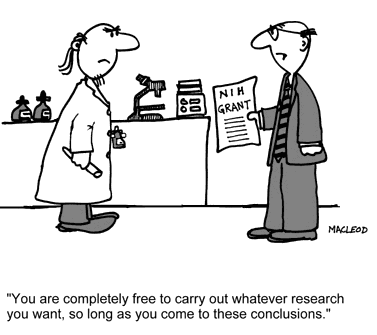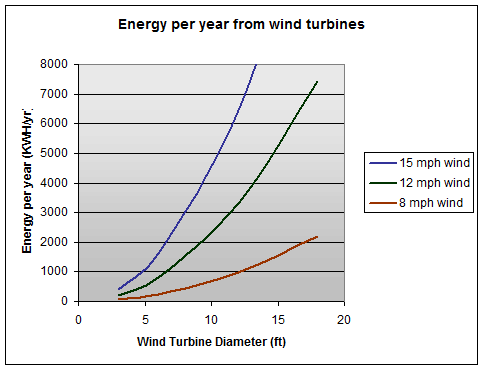
Windmills in Palm Springs, California
Defining climate change as a hazard to human development is a moral, rather than scientific, dilemma: climate change is only dangerous insofar as it threatens the things we value. This is why the increasingly urgent pleadings by scientists worldwide to take mitigating measures have so far been met with skepticism, shyness and inaction. However, it seems that new winds might be blowing in the way both the American public and the political debate are approaching the issue: the majority of Americans (73%) believe that ‘global warming is happening’ – although only 18% see it as a serious, human-caused problem. A shift in the political scene is also observable, especially after the Clean Energy and Security Act was passed last June, putting a cap on U.S. carbon emissions.
Addressing energy production and consumption is significant not only because the energy supply sector is the biggest contributor of CO2 emissions (emitting approximately 13 GtCO2eq in 2004, roughly 26% of all emissions)1, but also because of its potential in triggering international conflict. Current energy production is based on fossil fuel burning, mainly natural gas and coal, whose reserves can be found in a select few countries. The trading system that now determines global access to the raw materials for energy production has proven fickle and sensitive to manipulation in the name of political interests. Thus, it is particularly sensible for countries who depend on fossil fuel imports to invest in new ways of producing energy which could be locally developed and carbon-free.
Restructuring the energy production industry implies the scaling of existing alternative energy sources, such as solar, geothermal and wind power, to account for a greater percentage of the energy demand, and the development of new technologies that complement them. It should be noted that none of the currently available renewable sources of energy is as reliable as fossil fuel combustion has been, and therefore a composite system based on various sources needs to be established. The restructuring process also requires adjustments in the relevant legislation and facilitation of financing for private enterprises to apply the technologies. As daunting a process as this seems, the most successful example of its application is the state of California, a counterintuitive candidate if we think of the lag between the U.S. and other western nations in legally-binding commitments to climate change mitigation.

Free-stadning solar panel
California’s governor Schwarzenegger passed the Global Warming Solutions Act in 2006, committing the state to reducing its carbon emissions to 1990 levels by the year 2020, and requiring that all utility companies produce 20% of their energy from renewable sources by 2010, and 33% by 20202. These regulations come as the result of almost forty years of sustained energy use reductions by private citizens (who consume, on average, 40% less energy than the rest of Americans), of higher standards on building and appliance efficiency, and of education programs that redefine the value of energy. What makes California the role model for redesign of energy supply systems is the economic approach it implemented, which allowed the state to remain as one of the world’s largest economies. Combining clean energy, national security and economic development may just be a solution we can materialize.
The following video further investigates the Californian model, showing the intricacies of this not-so-smooth process and why it ultimately yields positive results. (The video is a bit on the longer side – takes about 20 minutes to watch – but is definitely worth the time.)
One of the issues the documentary touches on is wind farms. When a farmer who wants to install a windmill on his property is interviewed, he explains how one of the major concerns the community has is about the aesthetic consequences of the construction: they want to keep the pretty picture. But as humanity faces the major challenge it has ever seen, it seems an opportune moment to redesign our value structures along with our energy systems. Is it time we forgo the pretty picture for the sake of the smart picture?
1Mann, M. E. & Kump, L. R. (2008). Dire predictions: Understanding global warming. New York: DK Publishing, Inc.
2Luers, A. L., Mastrandrea, M. D., Hayhoe, K., & Frumhoff, P. C. (2007). How to avoid dangerous climate change: A target for U.S. emissions reductions. Union of Concerned Scientists.
Tags: California, Clean Energy and Security Act, climate change, fossil fuels, Gloabl Warming Solutions Act, mitigation, Solar Power, US Energy Policy, Wind
While reading through Amy Luers’ How to Avoid Dangerous Climate Change, I was shocked to read her assertion that carbon emissions in the industrialized world need to peak in 2010.
Although nothing should shock me about climate change numbers anymore (and admittedly, other scientists argue for different peak years), the statement shocked me nonetheless to think that 2010 will be upon us in two short months. Can we really manage to peak by then?
I guess a better question is: why does it have to be so soon?
In today’s blog I will break down her argument to its central propositions to prove that one follows the other and that her conclusion for an emissions peak in 2010 is logically sound. 
First, in order to trust that Luers is giving sound, peer-reviewed scientific data in her proposition, I did a little background research into the group that she represents – The Union of Concerned Scientists. The Union is a nonprofit science advocacy group founded in 1969 that publishes impartial research in order to help government agents make informed decisions. It is a private group that stresses scientific integrity and protection of human health, safety, and environment. Luers’ paper specifically targeted the upper limit of acceptable climate change (when it would become dangerous in her opinion) and therefore cannot be said to be politically biased, but rather directed towards human safety.
Then in order to trust Luers’ conclusion, we have to accept the tenents of her argument. She argues that “a 450 ppm CO2eq stabilization target should represent the upper limit on concentrations of heat-trapping emissions set by any policy that seeks to avoid dangerous climate change.”
So next we must seek her definition of dangerous climate change: an increase of 2 to 3 degrees Celsius (3.6-5.4 degrees Fahrenheit) above pre-industrial levels (pre-1860).
The next logical question to ask is: what effects would this increase have? Is Luers’ definition of “dangerous” the same as ours as readers? She responds:
“Sustained warming of this magnitude could, for example, result in such large-scale, irreversible changes as the extinction of many species and the destabilization and extensive melting of the Greenland and West Antarctic ice sheets—causing global sea level to rise between 12 and 40 feet.”
If these dangers don’t seem that threatening to you personally (I understand that the oceans don’t seem like they would affect the normal person), take a look at my blog from last week for a better understanding of why we wouldn’t want to change large pieces of the climate system.
So what does that mean in terms of CO2? Luers argues that the maximum ppm in the atmosphere can be 450 (again, remember this is her worst case scenario – it only provides a 50% chance of keeping temperatures from rising more than 2 degrees). But if we’re only at 385.92ppm currently – why would we need to peak next year?
Because although industrialized nations may peak now, the model allows for developing nations to peak in 2020. These countries will admittedly need to burn fossil fuels as we did during industrialization, but now that we have the capability to build more eco-friendly technologies, it is our moral obligation to begin doing so. And just because we peak this year, doesn’t mean by any stretch of the imagination that our output will simply drop off – it will be a very gradual change at best, assuming we will be able to reduce by 70-80% by 2050.
But is Luers being too drastic? Unfortunately, no.  Between 1955 and 2009, CO2 levels have already risen more than 70 ppm from only the countries that have already industrialized. The increase could only be faster if the developed world continues on the same path as the developing world is just getting into the fossil fuel game.
Between 1955 and 2009, CO2 levels have already risen more than 70 ppm from only the countries that have already industrialized. The increase could only be faster if the developed world continues on the same path as the developing world is just getting into the fossil fuel game.
Because the world must now budget its carbon emissions between the industrialized and developing world, the United States cumulative budget must reflect the need for a decrease in CO2 output from the industrialized nations. The budget has been identified as 160 to 265 GtCO2 for the period of 2000-2050, and we’ve already used 45GtCO2. Since the budget is a span, if we average it out to 212.5GtCO2, we’d be able to emit 42.5GtCO2 per decade, which means that the 45Gt we’ve already emitted is on the high end and does need to peak.
Although climate change numbers are a bit hazy (such as spans identified as the budget for U.S. carbon emissions), we have to look at the trends rather than the numbers themselves. The trend for increased CO2 is global warming, although the exact numbers are hard to come by because CO2 is literally effecting every system on Earth. The year 2010 is perhaps an arbitrary date based on this set of data. Many climate scientists argue that 350 ppm is a better goal because it isn’t the maximum acceptable for dangerous climate change and why should we skirt danger so closely? In that regard, 2010 is already far too late, and mitigation needs to happen faster. Yet the prescription from Luers’ argument is the same basic scheme as the rest of them: we need change and we need it quick. The numbers may not be exact, but the trends are of definite increase. If papers like Luers’ are what we need to get people to understand the dangers, then I encourage more well-informed scientists to write them.

Read all articles by Brett Shollenberger on this blog!
Read articles by Brett Shollenberger in Dickinson Magazine!
Read Brett Shollenberger‘s blog!
Tags: Brett Shollenberger, dangerous climate change, mitigation
The cultivation of rice is absolutely essential to the collective human diet, with 40% of the world’s population depending on it as its major food source. Most of the primary producers are located in Asia, where rice paddy fields make up 70% of the cultivated area in southern China and accounts for 50% of the daily calories consumed by Indonesians. Unfortunately for us, lowland rice cultivation is also one of the primary contributors of methane (CH4) gas into the atmosphere, emitting an estimated 20-100 Tg of CH4 per year into an atmosphere already stressed with growing CO2 emissions. Worse, methane gas is 21 times more potent a greenhouse gas than CO2, so has an enormous impact on the warming of the climate.
Unlike CO2, methane is produced by microbes which thrive in the bodies of animals like cows, goats, and sheep, as well as through anaerobic decomposition of organic material in agricultural fields. Rice paddy fields, where rice is grown under a layer of standing water several inches thick, are a perfect environment for CH4 production. Some methane does come from natural sources like wetlands and permafrost, but the IPCC estimates that 60% of the CH4 load currently in the atmosphere was put there by human activity. Animal agriculture, fossil fuel production, landfills, and animal waste management all contribute to the annual CH4 output.
By 2100, the world population is predicted to rise to approximately 9 billion residents. Already, in the past 150 years, CO2 emissions have increased over 31% and methane production has nearly doubled. Since the population growth is centered in southeast Asian countries like India, and Indonesia, the populations that rely the most upon rice in their everyday lives. Drastic changes to the way we grow rice will be necessary if we have any hope of producing enough to feed that many people without suffocating our planet.

Upland rice cultivation, when the fields are not submerged, are far more environmentally friendly than lowland rice cultivation, where the fields are submerged.
Studies are already in motion regarding ways to limit the amount of water in the rice fields of China, India, Indonesia, and Thailand. A new irrigation system, called “water-saving irrigation,” removes all water from the paddy fields after the stage of recovering the seeds, and is already in use in China. This method not only preserves water, but it actually increases rice yields and limits the time that microbes have to produce methane in the fields. Techniques such as this will need to become more widespread, quickly, to decrease the output of this dangerous gas.
Other ways to decrease CH4 emissions:
Decrease meat intake. One of the quickest, surest, and perhaps easiest ways to decrease our production of methane is to limit our intake of meat products. An average of 80% of the methane produced every year comes from the digestive tracks of animals, so limiting the number of animals raised will contribute hugely to decreasing our methane output.
Landfills account for 34% of methane emissions in the United States, as waste decomposes in anaerobic conditions. The EPA has developed a volunteer Landfill Methane Outreach Program to begin reducing the methane output from landfills.
There are mainly three greenhouse gas contributors:
– Global energy supply sector
– Forestry & industry
– Transport & agriculture
Among them, the global energy supply sector is the largest source of greenhouse gas emissions. It is predicted that the energy-related emission rates are about to rise an additional 50% in the coming decades (Dire Predictions). It must be cut back in order to reduce the greenhouse gas emissions which can be done by either increase the efficiency in energy supply or use renewable energy.
There are many different kinds of renewable energy such as solar energy, hydroenergy, and wind energy. Renewable energy comes from the nature and it hardly exerts pollutions into the atmosphere, and that is why it is also called the green energy. Among them, wind energy has become the most promising and the fastest developing green energy. Wind is generated by uneven heating that the equator area gets more heat than the poles, so air flows between them. Wind energy is clean and does not generate any carbon doixide.
Wind turbines are usually used to generate electricity from wind. There are two main wind generators, one with horizontal axis, and one with vertical axis. A wind turbine transforms the wind’s kinetic energy into mechanical engergy to generate electricity. Here is a video showing how wind turbines work: Wind turbines

Wind turbines can generate a huge amount of power. America is one of the first countries that started to use wind to generate power. In the late last century, the price for petroleum kept rising which created an energy crisis period. At that time, the American government took the chance to develop wind energy and encouraged the use of it. Take California as an example, the industry of using wind energy was exempt from paying tax, so the industry developed rapidly. It was estimated that the wind energy in California has produced more than 4000 million kilowatt-hours of electricity in 2004, which was about 1.5 percent of the state’s total electricity. That was even more than how much it takes to light a city the size of San Francisco. In 2008, wind machines in the United States generated a total of 52 billion kilowatthours, about 1.3% of total U.S. electricity generation.

Even being the cleanest and the greenest energy, wind power does have negative impacts such as visual impact, noise, and killing flying animals. And some people might argue that the construction of wind turbines may generate a great deal of greenhouse gas. But the postive impacts of wind turbines definitely outweigh the negative ones. The engergy they generate in several months will be able to compensate the emissions during production, and they are good for about twenty years. Usually wind turbines are built in rural areas where the economy is not developed, so this is also a great way to boost the economy.
To reduce the reliance on using fossil fuel, finding an alternative is the best way, and it is even better if the alternative does not generate any greenhouse gas. It is recognized that using wind energy is the key to fight with climate change, and nowadays, the global market for wind energy is expanding rapidly. “The global wind industry has set itself a target of saving 1.5 billion tons of CO2 per year by 2020, which would amount to a total of 10 billion tons saved in this period.”
Humans are no different from other animals. Human population growth seems to be similar to rabbit population growth without predators. This continually increasing growth is unsustainable and may be part of the boom and bust cycle. Are humans smart enough to avoid the bust?
We are an extremely adaptive species. We have reduced death rates and increased birth rates with development of sanitation and medicine (Give ourselves a big pat on the back). We have increased the carrying capacity for humans through the development of agriculture, the industrial revolution, and technological advancements. For more information see The Theory of Population Growth Cycles by Donald Cowgill. HOLD UP…there is a problem. We are still breeding like rabbits.
Human population is growing exponentially without any serious moderating influence (even wars and diseases are not stemming the growth). However, just like the grass around an overpopulated rabbit warren, our resources are becoming more scarce and less appetizing. There are numerous problems that will be exacerbated by global climate change. Examples of these these problems are droughts occurring in Australia , flooding in Bangladesh, biodiversity loss in the Amazon, increased forest fires in the Western United States, and hurricanes buffeting the Caribbean. 
These issues are described in more detail by the fourth IPCC Report, which summarized in Dire Predictions: Understanding Global Warming: The Illustrated guide to the findings of the IPCC and a wikipedia summary.
Global climate change is an especially deadly affliction, because it is weakening the earths immune system while causing the above mentioned symptoms to be more intense. I described this in more detail in the blog article Is Earth an AIDS patient? This has created an unhealthy cycle that is eroding the earth’s immune system.
This is a perfect example of the tragedy of the commons, where everyone is hurt by the over exploitation of resources.
We need to use our adaptivity to be able to address these problems. It is therefore important to look at what is inhibiting effective adaptation. Increasingly a large number of the growing population is being born into poverty and being impacted by climate influenced disasters. It is highlighted in A Stitch in Time: General Lessons from Specific Case Studies that one of the largest barrier to adaptation to climate change in the future is poverty. This is because there is not sufficient social and political institutions nor is there a sufficient economic and natural resources available to help people to adapt to changing environments and conditions.
Are humans different than other animals? Being smarter than rabbits has not stopped us from experiencing unsustainable population growth. Unfortunately, these younger generations are being born into an unstable world. What would make us different from rabbits and other animals is if we were able to control our population, (in a hopefully more moderate manner than the One-Child Policy in China, which is described in greater detail in the BBC Challenge on the One-Child Policy). We need to acknowledge that population control is a method for adapting to protect future populations from over resource use and their corresponding externalities. Even though this is politically and socially distasteful I would argue that it is preferable to allowing runaway population growth, resulting in even larger conflicts over resource use. Humans may have no predators now, but it is only a matter of time before the wolves of global climate change begin to decimate the impoverished peoples of the world.
Tags: adaptation, climate change, Philip Rothrock



Your Comments